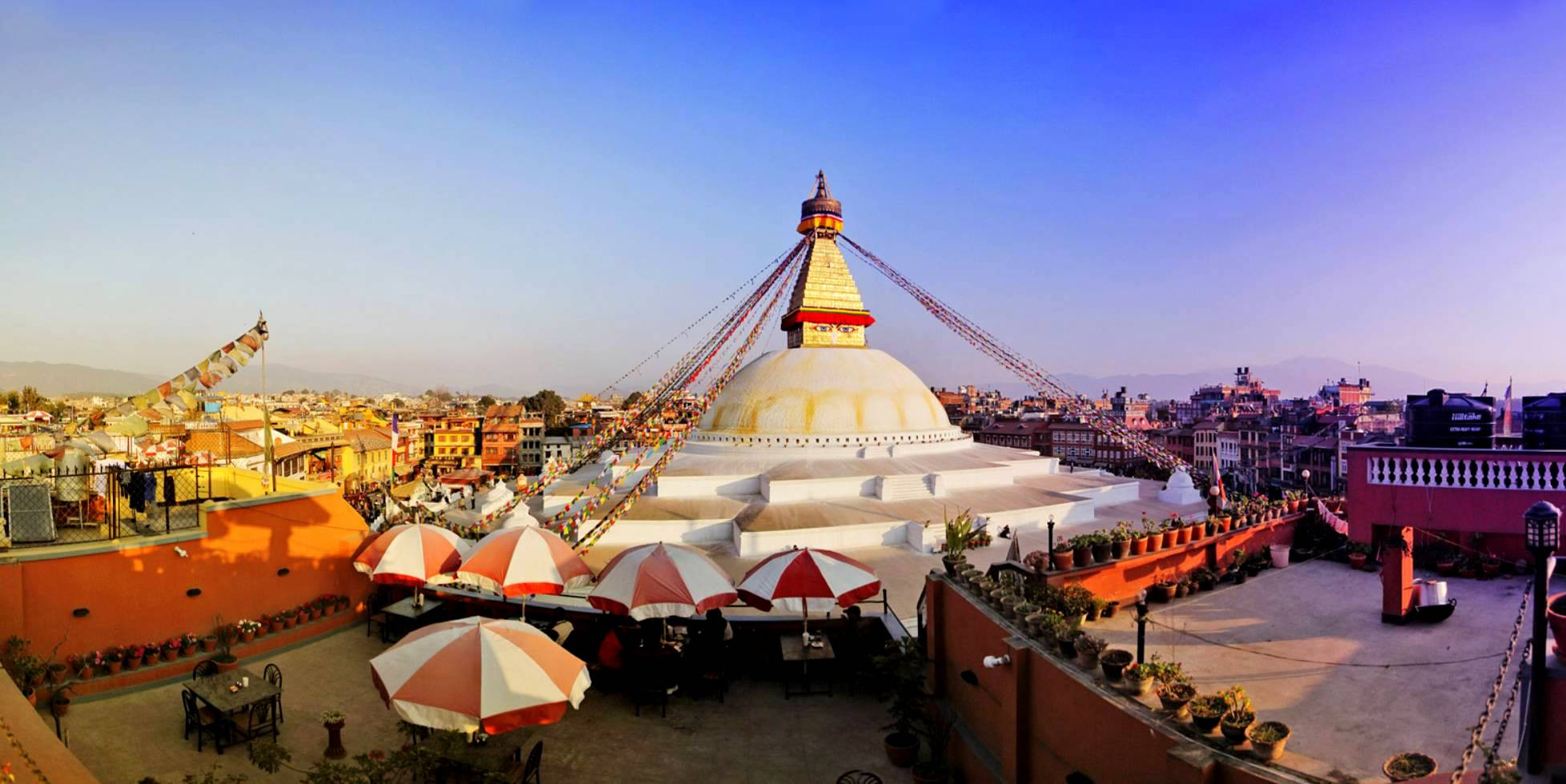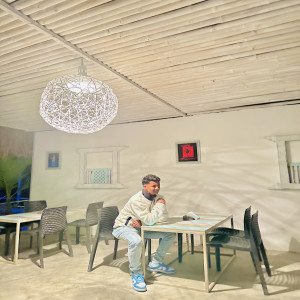Durbar Square
Durbar Square, often considered the heart of Kathmandu, is a vibrant and historically significant area that serves as a focal point for both locals and tourists. This UNESCO World Heritage site is known for its exquisite architectural beauty and the cultural richness it offers. Here's a closer look at what makes Durbar Square a must-visit destination in Kathmandu:
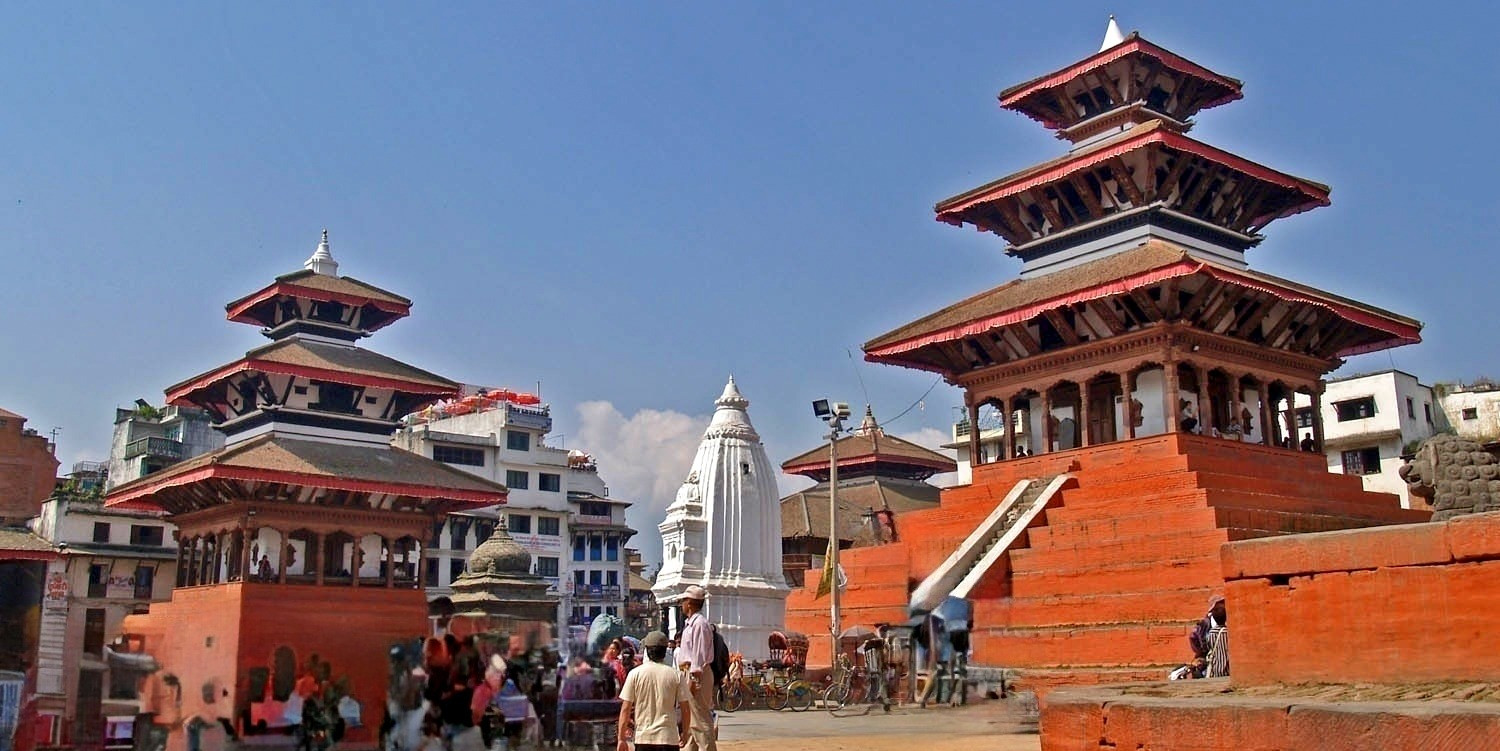
-
Historical Significance: Durbar Square, or "Royal Palace Square," refers to the plazas and areas opposite the old royal palaces in Nepal, and Kathmandu's is the most famous among them. It was the site of the royal Nepalese residence until the 19th century and the place where the city's kings were crowned and their coronations solemnized.
-
Architectural Splendor: The architecture in Durbar Square is a testament to the skills of the Newar artists and craftsmen over several centuries. The square is filled with palaces, courtyards, and temples, constructed from the 12th to the 18th century. The craftsmanship displayed in the wood carvings and the metalwork on display is truly spectacular. Notable structures within the square include the Taleju Temple, the Jagannath Temple, and the House of the Living Goddess (Kumari Ghar), where the Kumari, a young girl chosen to be the town's living goddess until puberty, resides.
-
Cultural Experience: Durbar Square is not just a relic of the past but a living, breathing part of Kathmandu's culture. It is often the epicenter of festivals, religious events, and ceremonies. The square is always bustling with activity, with various vendors, tourists, and locals mingling through the historic alleys.
-
Restoration Efforts: The square suffered significant damage during the 2015 earthquake, but restoration efforts have been ongoing to preserve its historical and cultural integrity. Many temples and structures have been rebuilt, although the process is still a work in progress.
-
Visitor Experience: Tourists visiting Durbar Square can explore the various museums within the palace complex. The Hanuman Dhoka Palace Museum, located in the old royal palace, offers insights into the royal history of Nepal. Guides are available to provide historical context, making the visit more enriching.
Durbar Square is more than just a tourist destination; it's a place where history comes alive, offering a window into the rich tapestry of Nepalese culture and tradition. Whether you're interested in history, architecture, or culture, Durbar Square has something intriguing to offer.
Swayambhunath Stupa (Monkey Temple)
Swayambhunath Stupa, popularly known as the Monkey Temple, is one of Kathmandu's most iconic and revered landmarks. This ancient religious complex sits atop a hill in the Kathmandu Valley, offering panoramic views of the city. It is a sacred site in both Buddhism and Hinduism and is known for its blend of spiritual and cultural significance.
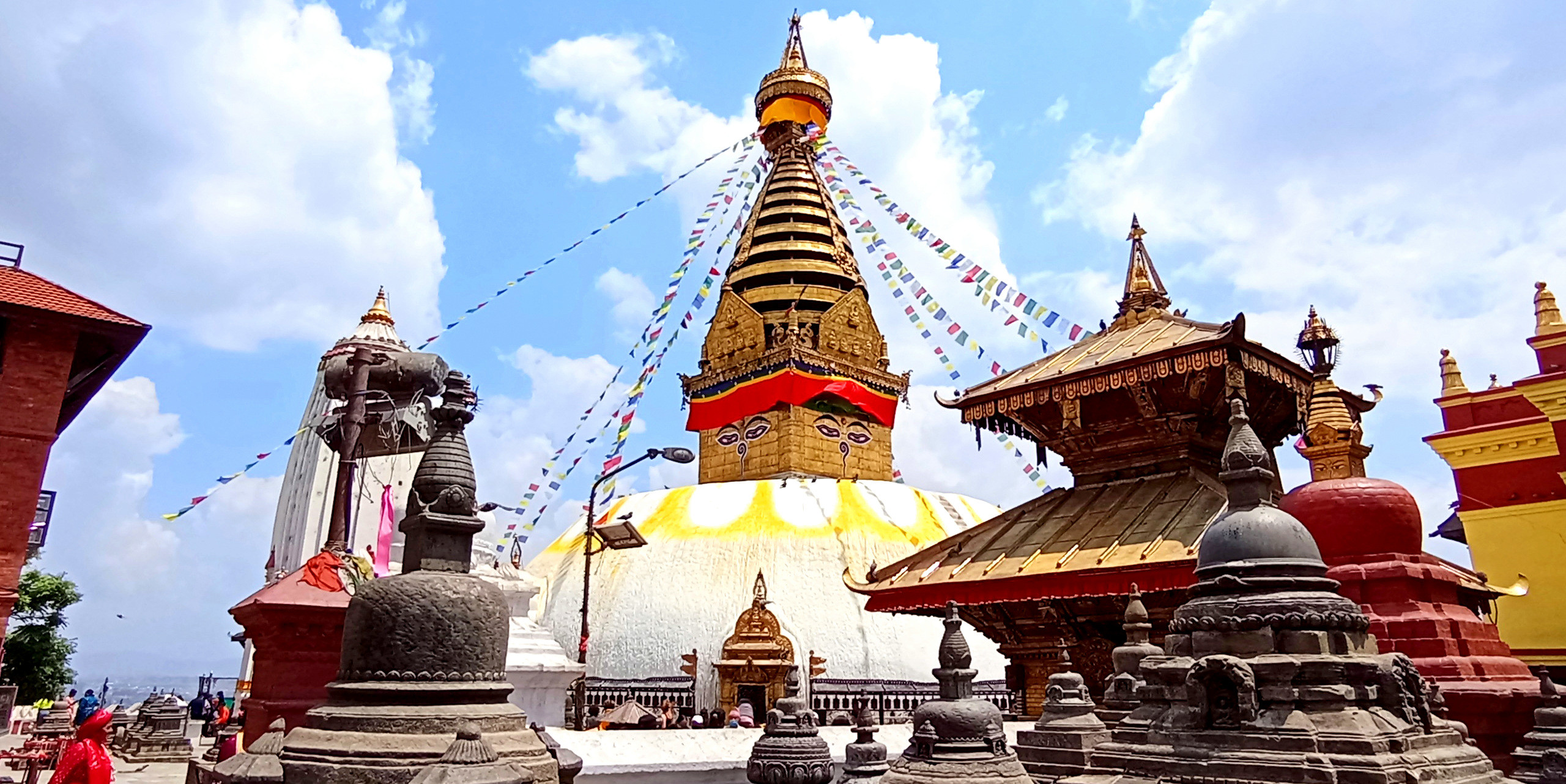
-
Historical and Spiritual Significance: Swayambhunath is among the oldest religious sites in Nepal, with its origins dating back to the 5th century. According to legend, the entire valley was once filled with an enormous lake, out of which grew a lotus. The valley came to be known as Swayambhu, meaning "Self-Created." The name comes from an eternal self-existent flame (svyambhu) over which a stupa was later built. The stupa is a major pilgrimage site for Buddhists and attracts practitioners from around the world.
-
Architectural Features: The stupa itself features a white dome at its base, representing the earth, and a cubical structure on top with the eyes of Buddha looking in all four directions. These eyes symbolize the omnipresence of the Buddha. The thirteen pinnacles on the top symbolize the stages that a human being must pass through to achieve nirvana. The entire structure is adorned with colorful prayer flags, which flutter in the wind and are believed to spread prayers and goodwill into the universe.
-
The Monkeys: The temple gets its nickname, the Monkey Temple, from the hundreds of monkeys that roam freely around the complex. These monkeys are considered sacred. According to local folklore, Manjushri, the bodhisattva of wisdom, was raising the hill on which the stupa stands when he let his hair grow long and head lice grow. These lice transformed into monkeys.
-
Cultural and Tourist Experience: Visitors to Swayambhunath can explore the various shrines and temples within the complex. There are also shops selling religious artifacts and souvenirs. The site is particularly bustling during Buddha's birthday, also known as Buddha Purnima, when thousands of lamps are lit, and the area comes alive with celebrations.
-
A Panoramic View: Perhaps one of the most striking features of Swayambhunath is its location. Situated on top of a hill, it offers a commanding view of Kathmandu and the valley beyond. Climbing the steps to the stupa is considered a meditative journey, and the view from the top is rewarding, not just for the panorama but also for the spiritual upliftment it offers.
Visiting Swayambhunath provides a beautiful blend of spirituality, history, and natural beauty, making it a must-visit destination for anyone traveling to Kathmandu. Whether you're seeking a place of worship, a touch of history, or just a peaceful spot to watch the sunset over the valley, the Monkey Temple stands out as a remarkable experience.
Thamel
Thamel, a vibrant and bustling district located in the heart of Kathmandu, Nepal, serves as the primary hub for tourists and travelers. Known for its narrow alleys lined with various shops, restaurants, pubs, and hotels, Thamel is a cultural melting pot that offers a lively and eclectic atmosphere.

-
Tourist Hotspot: Thamel has been a popular destination for tourists since the 1970s when Nepal first opened its doors to foreigners. It's widely regarded as the center for tourist activity in Kathmandu, offering a range of amenities and services tailored to international visitors. The area is particularly famous for its nightlife and provides a safe and exciting environment for tourists to explore after dark.
-
Shopping and Dining: One of the main attractions in Thamel is its extensive shopping scene. The streets are lined with stores selling everything from trekking and mountaineering gear to handmade local crafts, pashmina shawls, and traditional Nepalese artworks. Bargaining is common, so visitors can enjoy haggling for the best prices.
-
Cultural Experience: Despite its modern adaptations to cater to tourists, Thamel still retains a distinctly Nepalese character. Visitors can see traditional architecture in some areas and observe the daily lives of the local people. Street vendors, rickshaw drivers, and local artisans are common sights, adding to the area's cultural richness.
-
Nightlife: Thamel is also known for its vibrant nightlife, with numerous bars, clubs, and live music venues that stay open late into the night. It's a great place to meet other travelers and locals, making it a social hub for those looking to experience Kathmandu's lively side.
-
Accessibility and Accommodation: Thamel is strategically located within walking distance of major Kathmandu attractions like Durbar Square and the Garden of Dreams. The area offers a wide range of accommodations, from budget hostels to luxury hotels, catering to all levels of travelers.
-
Travel Services: For adventurers looking to explore beyond Kathmandu, Thamel offers countless travel agencies that can arrange everything from trekking expeditions in the Himalayas to jungle safaris in Chitwan National Park. The neighborhood is a crucial starting point for many exploring the wider wonders of Nepal.
Thamel is not just a place to shop and eat; it’s a cultural experience that offers insights into both the traditional and modern aspects of Nepali life. Its energy and charm make it an essential stop for anyone visiting Kathmandu.
Garden of Dreams
The Garden of Dreams, also known as the Garden of Six Seasons, is a historic garden in the heart of Kathmandu, Nepal. Situated just across from the former Royal Palace at the entrance of Thamel, this neoclassical garden is a serene oasis amidst the bustling cityscape of Kathmandu.
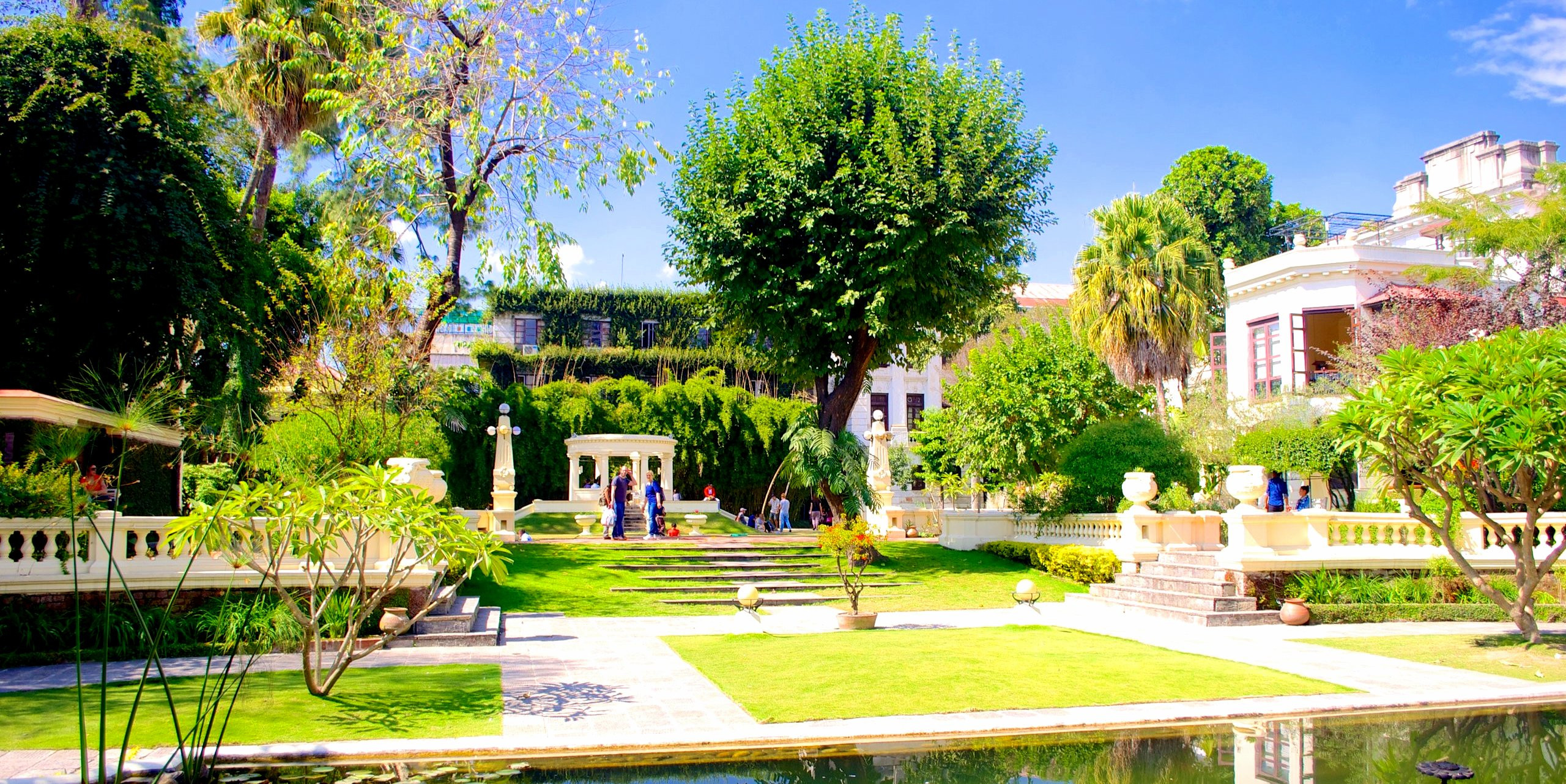
-
Historical Background: Designed and constructed in the early 1920s by Field Marshal Kaiser Sumsher Rana, the Garden of Dreams was originally part of a larger estate owned by the Rana dynasty, which ruled Nepal at the time. The garden was inspired by the Edwardian style, popular in England during the early 20th century, and was meant to be a private garden of Kaiser Sumsher. After falling into disrepair, the garden underwent a comprehensive restoration with the help of the Austrian government and was reopened to the public in 2007.
-
Architectural and Horticultural Appeal: The Garden of Dreams is spread over 6,895 square meters and features exquisite architectural and landscape designs. It includes pavilions, amphitheaters, pergolas, urns, and fountains, all of which reflect the grandeur of classical European gardens. The garden is divided into three sections, each with unique horticultural elements and symmetrical layouts, including a variety of exotic flowers, shrubs, and trees that provide a lush, tranquil environment.
-
Cultural and Recreational Space: Today, the Garden of Dreams serves as both a cultural venue and a recreational escape for locals and tourists alike. It hosts a variety of cultural events, including concerts, literary readings, and art displays, making it a significant cultural hub in Kathmandu. The garden is also popular for its peaceful ambiance, ideal for reading, relaxing, or enjoying a quiet stroll.
-
Kaiser Café: Within the premises of the Garden of Dreams, one can find the Kaiser Café, operated by Dwarika’s Hotel. This upscale café offers a fine dining experience with an array of cuisine options, allowing visitors to dine amidst the lush garden scenery. The café is a perfect spot for a leisurely lunch or a romantic dinner.
-
Visitor Information: The Garden of Dreams is a favorite among photographers and nature lovers due to its well-maintained gardens and impressive architecture. It’s a popular spot for picnics, leisurely walks, and anyone seeking a break from the hustle and bustle of Kathmandu. The garden charges a nominal entry fee, which goes towards its maintenance and preservation.
For anyone visiting Kathmandu, the Garden of Dreams offers a welcome respite from the city's chaotic streets and crowded markets. It is not only a testament to Nepal’s rich history and cultural heritage but also a perfect example of conservation and sustainable tourism in action. This garden provides a unique blend of history, nature, and architecture, making it a must-visit destination for anyone looking for peace and beauty in Kathmandu.
Patan Museum
Patan Museum, located in the heart of Patan Durbar Square in Lalitpur, Nepal, is celebrated as one of the finest museums in South Asia. It specializes in the arts and crafts of the Kathmandu Valley, providing a deep insight into the region's rich cultural heritage and the exquisite craftsmanship that characterizes Nepalese art.
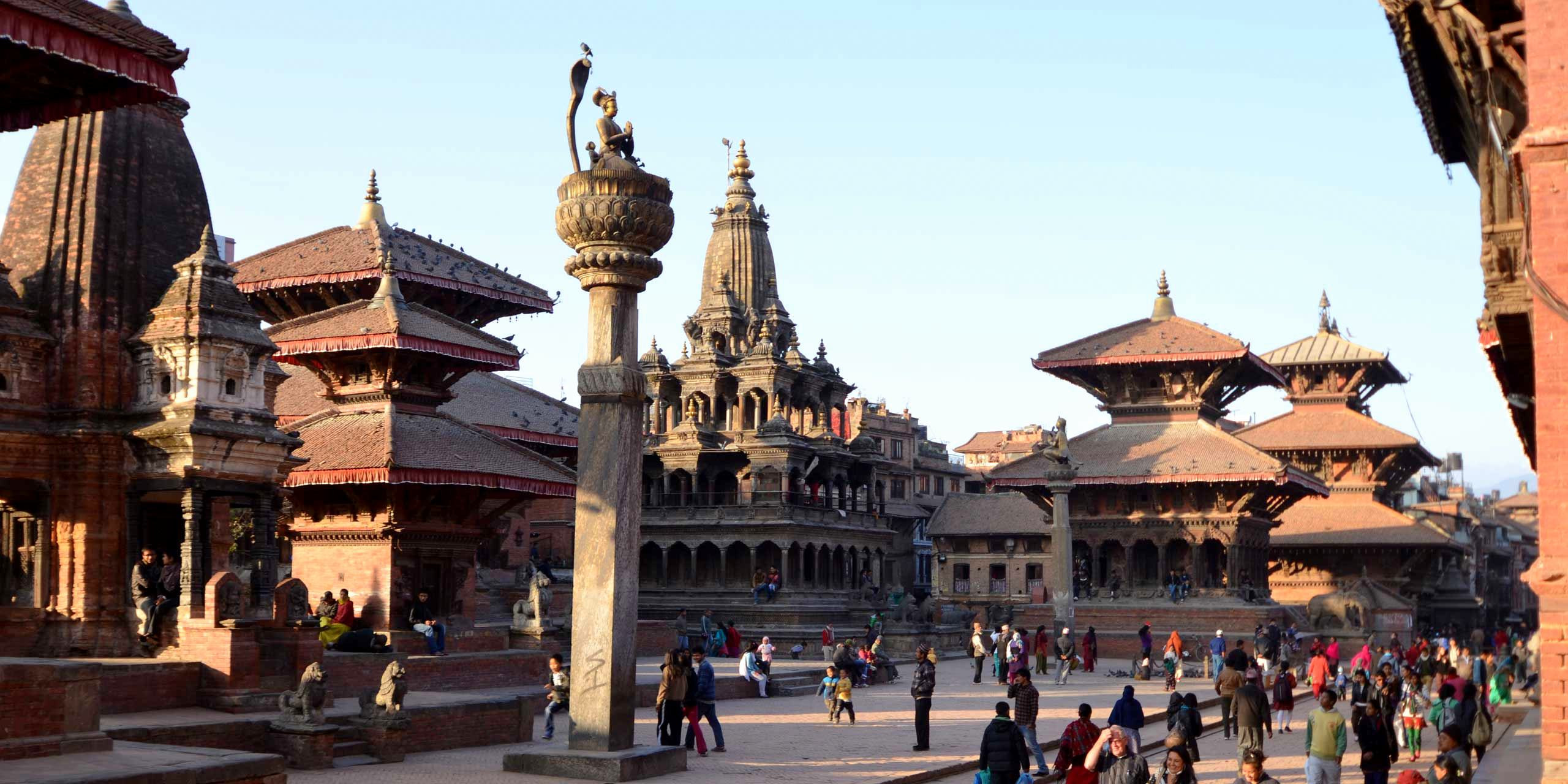
-
Historical and Architectural Significance: The museum itself is housed in an old Malla palace, which was once part of the royal palace complex of Patan. The building is a stunning example of traditional Nepalese architecture, featuring intricately carved wooden windows and beautifully crafted brickwork. The structure has been carefully restored with the help of international support, particularly from Austria, and now serves as a fine example of the fusion of traditional styles with modern museum presentation.
-
Collection and Exhibits: Patan Museum's collection includes a wide range of metalwork, woodwork, and sculptures that date back several centuries. These artifacts reflect the Hindu and Buddhist traditions of the Kathmandu Valley and are crucial in understanding the historical and religious fabric of the region. The museum's exhibits are well-curated and include detailed explanations that provide context to both the novice and the expert visitor, making it a learning experience for everyone.
-
Cultural Insights: The museum not only displays art but also tells the story of Nepal’s cultural evolution, focusing on the Newar artists of the Kathmandu Valley, who are known for their contributions to building temples and creating religious art across the Himalayas. By visiting the Patan Museum, one gains insights into the craftsmanship and techniques that have been passed down through generations, as well as the religious and cultural practices that have shaped these artistic expressions.
-
Educational Programs and Activities: Patan Museum also hosts a variety of educational programs and activities, including lectures, workshops, and temporary exhibitions that explore different themes related to Nepalese art and culture. These programs are designed to engage the community and visitors in the appreciation and preservation of Nepal's cultural heritage.
-
Visitor Experience: The museum is set within the larger complex of Patan Durbar Square, which itself is filled with ancient temples, shrines, and other historical buildings. This allows visitors to extend their museum visit into a broader exploration of Nepalese history and architecture. The museum also features a charming courtyard cafe where visitors can relax and reflect on their museum experience while enjoying the peaceful ambiance.
Patan Museum is an essential visit for anyone interested in the history and culture of Nepal. Its rich collections and the elegant setting in an ancient palace make it a highlight of any trip to the Kathmandu Valley. The museum not only preserves artifacts but also perpetuates the knowledge and skills of the Newar culture, making it a vibrant center of cultural preservation and education in Nepal.
Pashupatinath Temple
Pashupatinath Temple, located on the banks of the Bagmati River in Kathmandu, Nepal, is one of the most significant Hindu temples of Lord Shiva in the world. This sacred site serves as a symbol of faith, religion, culture, and tradition. It is also one of the oldest and most revered temples in Nepal, drawing thousands of pilgrims and visitors each year.
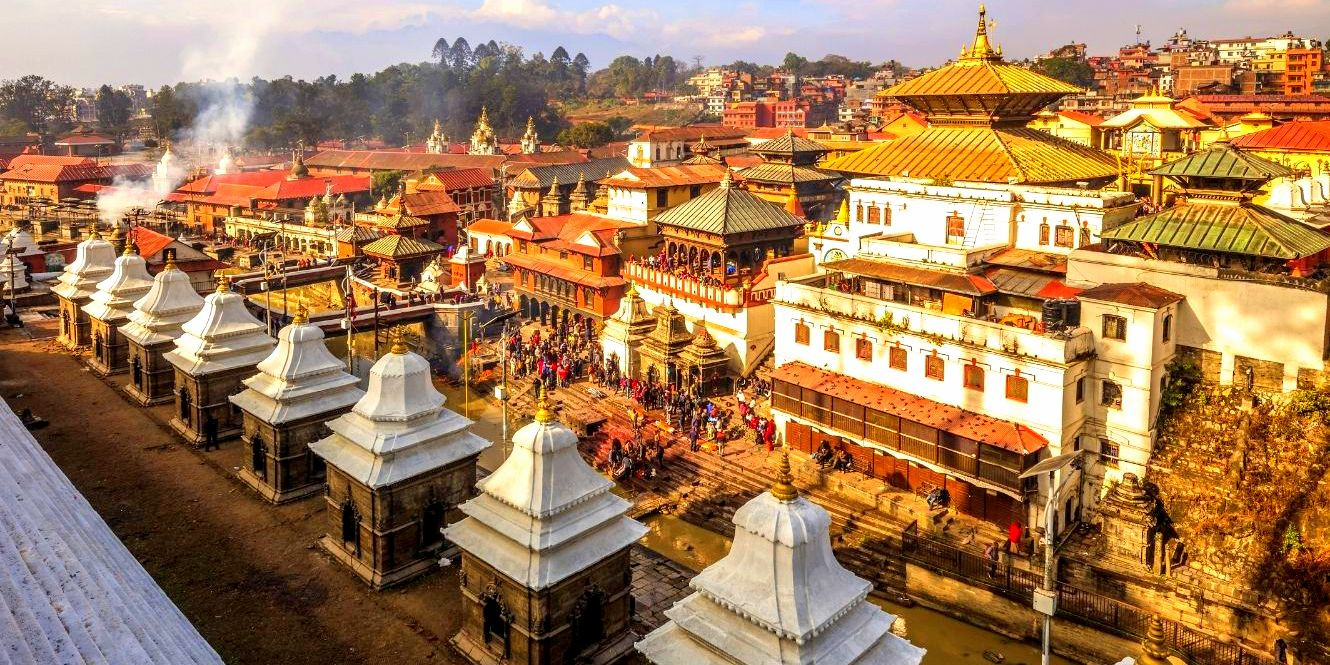
-
Historical Significance: The origins of Pashupatinath Temple date back to the 5th century, but the current structure was constructed in the 17th century after the previous building was consumed by termites. Over the centuries, it has remained a vital center of spiritual power and has been an important destination for devout Hindus.
-
Architectural Splendor: Pashupatinath Temple showcases exquisite Nepalese temple architecture with its intricate wood carvings and beautiful gold-plated roof. The temple complex consists of numerous smaller temples, ashrams, images, and inscriptions that have been added over the years, contributing to its architectural diversity. The main temple stands in the middle of an open courtyard and is built in the classic Nepalese pagoda style, noted for its finely crafted wooden rafters.
-
Spiritual and Cultural Hub: As a major pilgrimage center, Pashupatinath is particularly busy during major festivals like Shivaratri and Teej, when thousands of devotees visit to offer prayers and seek blessings. The temple is not only a place of worship but also a living cultural phenomenon that offers a deep insight into the Hindu way of life in Nepal.
-
Cremation Ghats: One of the unique aspects of Pashupatinath is its role in the life and death of the Hindu people. The cremation ghats along the Bagmati River are a poignant part of the temple complex, where open-air cremations are performed daily. Watching these ceremonies can be a profound experience, reflecting the strong cultural beliefs about life, death, and rebirth.
-
Sadhus and Ascetics: The temple complex is also home to many Sadhus or Hindu ascetics, who are easily recognizable by their vivid face paints and eccentric attire. These religious practitioners are often approachable for discussions about Hindu philosophy and their ascetic lifestyle.
-
Visitor Experience: Non-Hindus are not allowed inside the main temple but can observe the exterior architecture and the activities around the complex, including rituals performed at the riverbanks. The surrounding area offers shops selling religious paraphernalia, souvenirs, and local crafts, adding to the lively atmosphere of this spiritual site.
-
Wildlife and Scenery: Additionally, the area surrounding the temple is rich in greenery and is inhabited by many monkeys, which add a playful element to the solemn atmosphere of the temple grounds.
Visiting Pashupatinath offers an unparalleled glimpse into the spiritual life of Nepal, blending the sacred architecture, continuous religious practices, and vibrant cultural traditions that make Kathmandu such a fascinating city for both spiritual seekers and curious travelers.
Bhaktapur
Bhaktapur, also known as Bhadgaon or Khwopa, is an ancient city in the Kathmandu Valley of Nepal, renowned for its authentic local culture, traditional lifestyles, and well-preserved architecture. This city, which was once the capital of Nepal during the great Malla Kingdom until the second half of the 15th century, stands as a living representation of how the entire Kathmandu Valley would have looked in the medieval periods.
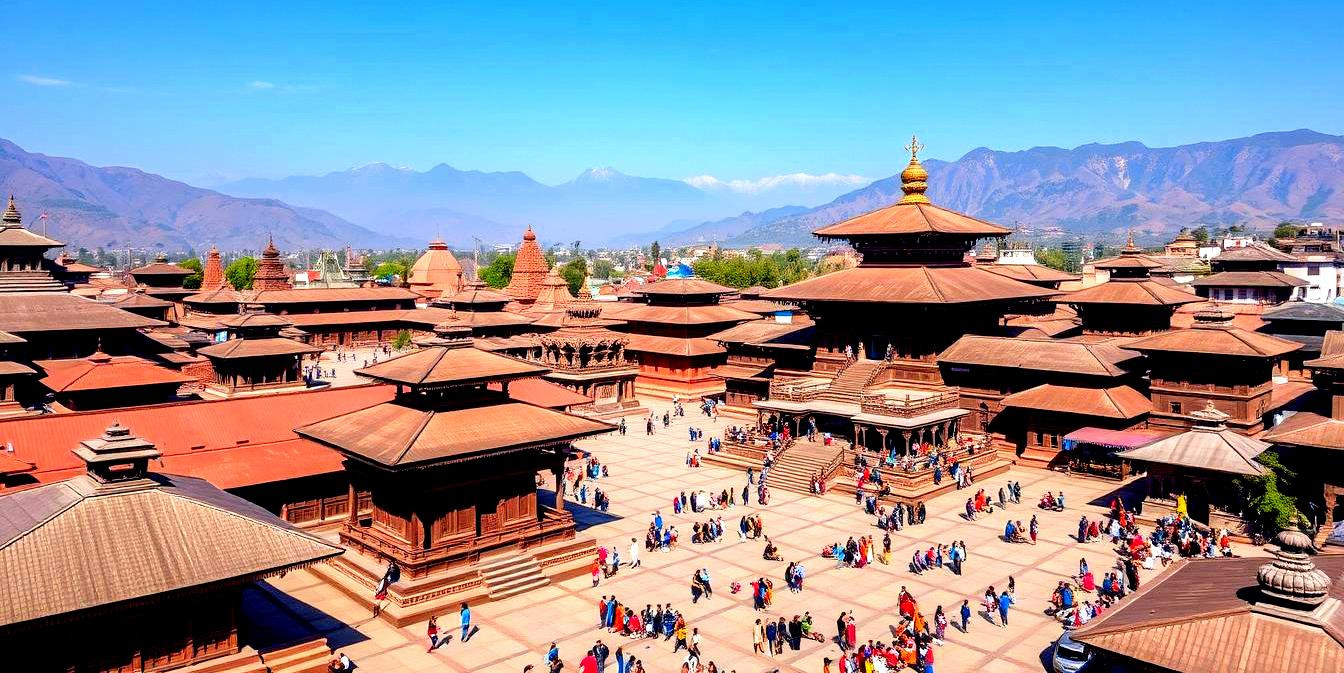
Cultural and Historical Significance
Bhaktapur is part of the UNESCO World Heritage site along with Kathmandu and Patan, recognized for its rich culture, temples, and wood, metal, and stone artworks. The city is particularly famous for its traditional art and architecture, vibrant festivals, exquisite pottery, and detailed woodcarvings.
Architectural Highlights
The city is home to some of the best-preserved palace courtyards and old city center in Nepal, characterized by narrow alleyways and wooden and brick houses. Key attractions include:
-
Bhaktapur Durbar Square: The plaza in front of the royal palace is known for its exquisite art and architectural showpieces, such as the Lion Gate, the statue of King Bhupatindra Malla, the Picture Gallery, the Batsala Temple, and the 55 Window Palace, which was the seat of royalty until 1769.
-
Nyatapola Temple: This five-storied pagoda, built in 1702 during the reign of King Bhupatindra Malla, stands as the tallest temple in Nepal, renowned for its massive structure and subtle craftsmanship.
-
Dattatreya Temple: Built from a single tree, this three-storied pagoda is dedicated to the triad of Brahma, Vishnu, and Shiva. It's located in the Dattatreya Square, which also houses the famous Peacock Window, which is carved into the bricks and is a masterpiece of wood carving.
Cultural Experiences: Bhaktapur is famous for its traditional festivals like Bisket Jatra, Gai Jatra, and Bhaktapur Day, among others, which are celebrated with great enthusiasm and cultural pomp. The local Newari community, known for their rich cultural heritage, plays a pivotal role in keeping these traditions alive.
Art and Craftsmanship: The city is also known for its pottery and ceramic products, showcased in Pottery Square, where visitors can observe potters at work using traditional techniques that have been passed down through generations. Another notable craft is the intricate woodcarvings seen in the temples and residential buildings around the city.
Local Cuisine: Visiting Bhaktapur also offers the chance to taste unique local cuisine, including the famous king curd (juju dhau), a creamy, sweet yogurt that is a must-try for anyone visiting the city.
Preservation Efforts: Despite suffering significant damage during the 2015 earthquake, Bhaktapur has undergone substantial restoration efforts funded by local and international groups to preserve its historical sites and revive its former glory.
Visitor Experience: Bhaktapur charges an entrance fee to foreign tourists, which goes towards the maintenance and restoration of its heritage sites. The city's relatively slower pace and less crowded streets compared to Kathmandu make it a pleasant place for tourists looking to experience the tranquility and charm of Nepali history and culture.
Visiting Bhaktapur offers a fascinating glimpse into the ancient traditions and preserved heritage of Nepal, making it a compelling destination for those interested in history, architecture, and cultural immersion.
Nagarkot
Nagarkot, located about 32 kilometers east of Kathmandu, Nepal, is famed for its breathtaking views of the Himalayas, including Mount Everest and other snow-capped peaks of the Himalayan range of eastern Nepal. It is a popular spot for visitors wanting to see the Himalayas without embarking on strenuous treks.

-
Scenic Beauty and Panoramic Views: Nagarkot sits at an altitude of approximately 2,175 meters (7,136 feet) and is one of the most scenic spots in the Bhaktapur district. It is renowned for its sunrise and sunset views of the Himalayas. Many visitors opt to stay overnight to catch the spectacular sunrise, where the changing colors of the Himalayas can be seen in all their glory.
-
Hiking and Trekking: Apart from the views, Nagarkot also offers several walking trails and short treks that lead to the Tamang villages nearby. These treks offer a good mix of natural and cultural exploration, providing insights into the life of Nepal’s indigenous communities. The most popular is the trek from Nagarkot to Changu Narayan, a hike that takes about three to four hours and offers a combination of cultural and natural attractions.
-
Climate: Nagarkot has a pleasant climate with cool temperatures that make it a delightful escape from the city's hustle and bustle, especially during the hot summer months. The best times to visit for clear skies are from October to December and from March to April.
-
Accommodations and Facilities: The area features a range of accommodations, from luxurious hotels to affordable lodges, many of which offer excellent facilities and even better views of the mountain ranges. Many of these hotels also provide viewing terraces or rooftop platforms, ensuring that all guests have the chance to experience the majestic Himalayan panorama.
-
Nature and Wildlife: For nature lovers, Nagarkot is surrounded by thickly forested hills of pine trees and offers a natural habitat for a variety of wildlife. It is part of the transition zone between the plain terrains and the mountainous region, making it an ideal spot for bird watching and wildlife photography.
-
Accessibility: Nagarkot is easily accessible by road from Kathmandu and can be reached by car in about 1-1.5 hours, making it an ideal location for a day trip or a quiet overnight stay. However, the road can be winding and steep, so visitors should be prepared for a bit of a rough ride.
Nagarkot is a perfect getaway for those looking to enjoy the peaceful surroundings and natural beauty without venturing too far from Kathmandu. Whether it’s for a leisurely stay or a quick visit, Nagarkot provides a refreshing break from the routine, with the backdrop of some of the highest peaks in the world, making it a must-visit for anyone traveling to Nepal.
Cooking Class
Participating in a cooking class during your visit to Kathmandu can be a uniquely rewarding experience, allowing you to delve into the rich flavors and culinary traditions of Nepali cuisine. These classes often go beyond mere cooking, offering a hands-on immersion into Nepal’s culture, lifestyle, and hospitality. There are a lot of Cooking class academies in Kathmandu Such as Kathmandu Cooking Academy etc.
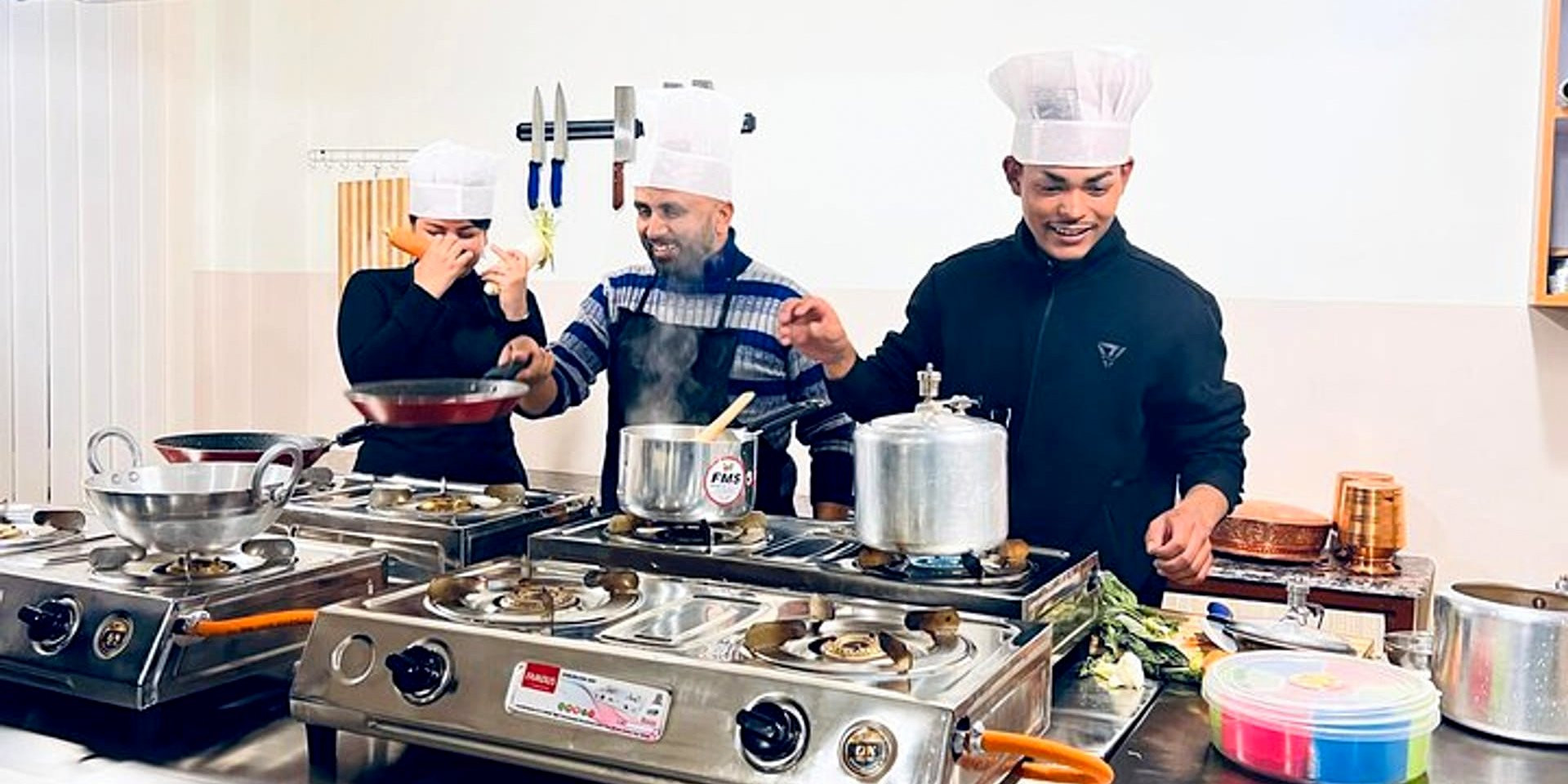
Educational and Cultural Experience: Cooking classes in Kathmandu typically start with a trip to a local market. This is an opportunity to learn about the ingredients that are staples in Nepali kitchens, such as timur (Sichuan pepper), jimbu (dried Himalayan herbs), and various lentils and spices. You'll experience the vibrant market scene and might even get to haggle over prices—a quintessential local experience.
Learning to Cook Traditional Dishes
The core of the cooking class is, of course, learning to prepare traditional Nepali dishes. Common menu items include:
-
Dal Bhat: A traditional meal of lentil soup (dal) served over boiled rice (bhat), accompanied by vegetable curries and pickles.
-
Momos: Tibetan-style dumplings that are a favorite in Nepal, filled with either vegetables or meat and served with a spicy dipping sauce.
-
Sel Roti: A sweet, ring-shaped rice bread that is often made during festivals.
-
Aloo Tama: A sour soup made with bamboo shoots, potatoes, and black-eyed peas.
Hands-on Instruction: Classes are typically led by a local chef or a knowledgeable home cook who can provide not only step-by-step cooking guidance but also insights into the cultural significance of the dishes you prepare. The classes are usually small, ensuring personalized attention and an opportunity to engage deeply with the cooking process.
Enjoying the Meal: Perhaps the best part of a cooking class is sitting down to enjoy your creations. It’s a time to savor the flavors of Nepali cuisine that you’ve prepared with your own hands, often in a communal setting that reflects Nepali dining traditions. This meal can also serve as a great time to ask more about Nepali food culture, culinary variations across different regions, and tips for recreating the recipes at home.
Social and Interactive Environment: Cooking classes are not only about food. They're a social event where you can meet fellow travelers or locals interested in culinary arts. These interactions can enrich your travel experience, giving you more insights into the local way of life.
Takeaways: In addition to the meal, participants often leave with a booklet or an online link to the recipes they learned during the class, allowing them to bring a taste of Nepal to their home kitchens.
A cooking class in Kathmandu is an enriching way to enhance your travel experience, offering a deeper understanding of Nepali culture through its cuisine. You’ll learn not only how to mix spices and prepare traditional dishes but also gain insights into the Nepalese way of life, making it a highlight of any cultural exploration in Nepal.
National Museum of Nepal
The National Museum of Nepal, also known as the Rashtriya Museum, is a prominent institution in Kathmandu, dedicated to preserving and showcasing the rich cultural and natural heritage of Nepal. It serves as a vital repository of Nepali history, art, and archaeology, offering a comprehensive glimpse into the country's diverse backgrounds and historical developments.
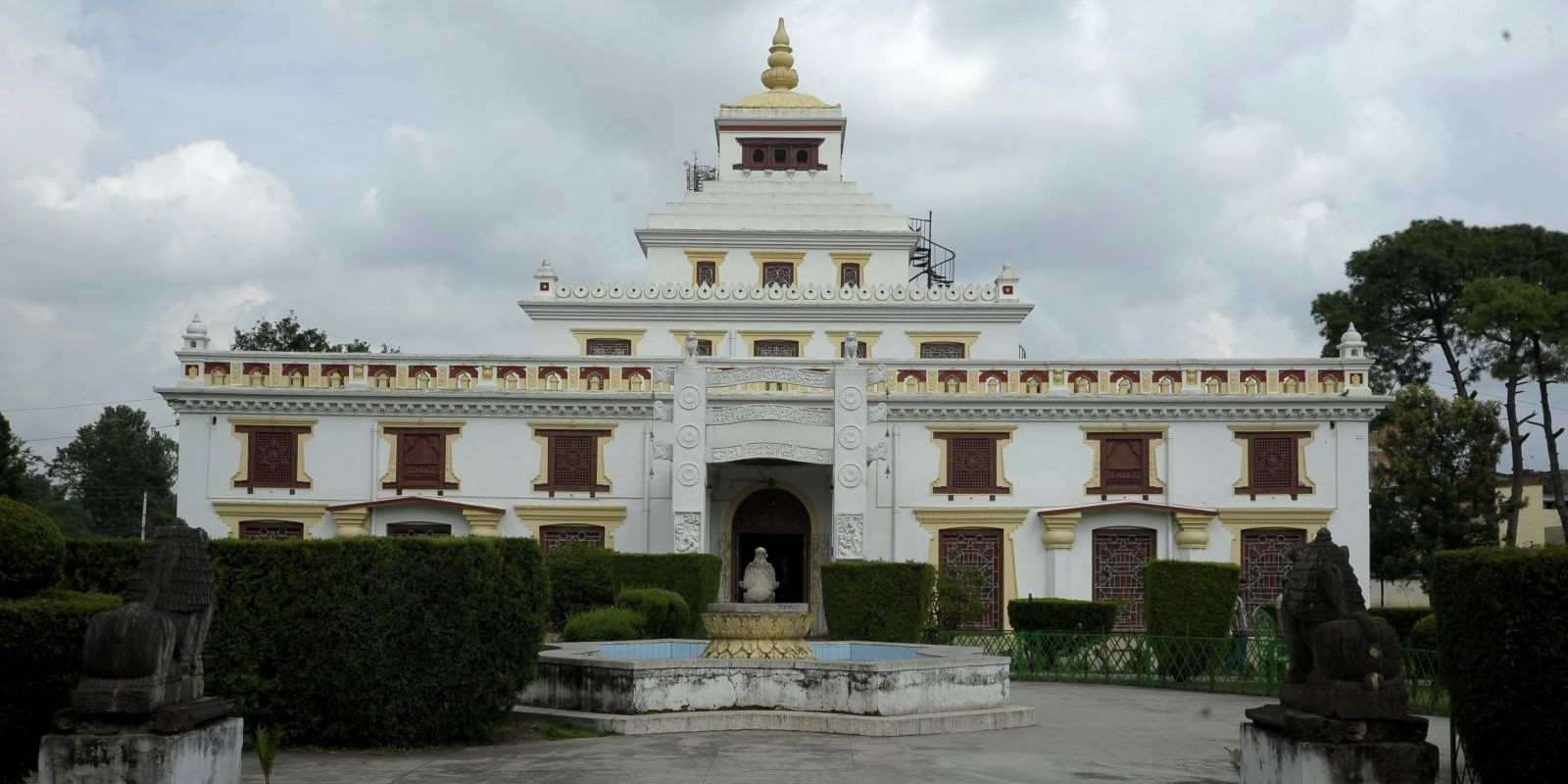
-
Overview and Location: The museum is situated in Chhauni, near Swayambhunath hill, just west of Kathmandu city. Established in 1928 during the Rana regime, it originally served as an arsenal museum but has since expanded to include three different buildings, each dedicated to a specific theme: the Historical Museum, the Art Museum, and the Natural History Museum.
-
Historical Museum: The Historical Museum primarily focuses on Nepal’s political, cultural, and military history. It houses an array of exhibits, including ancient scripts, coins, sculptures, and murals. Additionally, there are displays of medieval weapons and armor that tell tales of Nepal's warrior past and the evolution of warfare in the region. This part of the museum provides valuable insights into the shaping of modern Nepal through its historical conflicts and rulers.
-
Art Museum: The Art Museum is dedicated to the religious and artistic history of Nepal, showcasing a vast collection of Hindu and Buddhist artifacts. These include statues and paintings that date back centuries and are key to understanding the religious influences that have shaped Nepali culture. The art museum also highlights traditional crafts, such as woodcarving and metalwork, which are significant aspects of Nepali artistic heritage.
-
Natural History Museum: Located within the same complex, the Natural History Museum focuses on the flora and fauna of Nepal. It features a range of biological displays, including taxidermied animals, geological specimens, and botanical exhibits. This museum plays a crucial role in educating the public about Nepal's diverse ecosystems and the importance of conservation.
-
Educational Role: The National Museum of Nepal plays an educational role, providing a learning space for students and researchers interested in the various aspects of Nepali heritage. It regularly hosts lectures, workshops, and guided tours that help disseminate knowledge about Nepal’s rich traditions and history.
-
Visitor Experience: Visitors to the museum can expect a diverse range of exhibits that are well-maintained and informatively presented. The museum complex itself is surrounded by a quiet, leafy area, providing a pleasant backdrop for visitors exploring the exhibits. It's a recommended destination for anyone interested in delving deeper into Nepal's past and present.
-
Preservation Efforts: The museum is also involved in preservation efforts, particularly in restoring artifacts damaged by natural disasters, such as the 2015 earthquake. These efforts are crucial for maintaining Nepal’s cultural heritage for future generations.
The National Museum of Nepal is an essential visit for anyone looking to comprehensively understand the history, culture, and natural beauty of Nepal. It offers a unique blend of educational exhibits and cultural treasures, making it a cornerstone institution in Nepal's effort to preserve and celebrate its rich heritage.
Tips for 10 Things to Do in Kathmandu on Leisure Days
When planning leisure days in Kathmandu, it's important to embrace both the cultural richness and the natural beauty of this vibrant city. Here are some tips to help you make the most of your time and ensure your experiences are both enjoyable and enriching:
-
Start Early: Many of Kathmandu's attractions, especially religious sites like Swayambhunath Stupa and Pashupatinath Temple, are best experienced in the early morning. You'll avoid the crowds and get to see these sites in a more serene setting.
-
Dress Appropriately: When visiting religious sites, dress conservatively to respect local customs. This typically means covering shoulders and knees and removing shoes before entering certain temples.
-
Hire a Local Guide: For a deeper understanding of the history and culture, consider hiring a local guide, especially when visiting historical sites like Durbar Square or Bhaktapur. They can provide insights that you might miss otherwise.
-
Stay Hydrated: Kathmandu can be warm during the day, so keep a bottle of water with you at all times. It’s important to stay hydrated, especially if you're walking a lot.
-
Try Local Cuisine: Don't miss out on local Nepali dishes like momos (dumplings), dal bhat (rice and lentils), and Newari cuisine. Thamel offers a wide range of restaurants catering to all tastes and budgets.
-
Plan for Traffic: Traffic in Kathmandu can be chaotic, especially during peak hours. Allow extra time when traveling between different parts of the city.
-
Visit Markets: For souvenirs and local crafts, explore markets like Asan Tole or the handicraft market in Thamel. These are great places to practice your bargaining skills and pick up unique gifts.
-
Enjoy the Green Spaces: Take some time to relax in Kathmandu’s green spaces like the Garden of Dreams, a perfect spot for a quiet afternoon away from the hustle and bustle of the city.
-
Be Prepared for Power Cuts: Power cuts are common in Kathmandu, so it’s wise to carry a flashlight and keep your electronic devices charged when possible.
-
Respect Local Customs and Traditions: Always show respect for local customs and traditions. This includes being mindful when taking photographs, especially of religious ceremonies or local people.
By following these tips, you’ll have a more enjoyable and respectful visit to Kathmandu, allowing you to deeply appreciate everything this historic city has to offer.
Ideal Time for 10 Things to Do in Kathmandu on Leisure Days
Planning the ideal time to explore Kathmandu and engage in leisure activities involves considering both the weather and the cultural calendar. Here's a breakdown of the best times to visit Kathmandu for leisure activities, keeping in mind the climate and local festivals:
-
Post-Monsoon Season (October to November): This is arguably the best time to visit Kathmandu. The weather is clear and dry, offering excellent visibility, which is ideal for sightseeing and outdoor activities. The temperature is comfortably cool, making it perfect for exploring the city without the oppressive heat or the chill of winter. This season also offers stunning views of the Himalayas, which are especially clear after the monsoon rains have settled the dust.
-
Spring (March to April): Spring is another great time to visit Kathmandu. The weather is mild, and the valleys are lush and green. The temperature is warm during the day and cool at night. This is also the time when the rhododendrons, Nepal’s national flower, are in full bloom, adding splashes of color to the landscapes. Visibility is still good, though not as crystal clear as in the post-monsoon months.
-
Avoid the Monsoon Season (June to August): This period can be challenging for travel due to heavy rains, which might restrict outdoor activities and sightseeing due to flooding and muddy conditions.
-
Consider the Winter (December to February): While the winter months can be cold, especially in the mornings and evenings, daytime temperatures are usually mild enough for comfortable sightseeing. However, the air can be quite chilly, and the skies might be hazy, which can obscure mountain views.
By choosing the right time based on both weather and local events, your leisure days in Kathmandu can be filled with both enjoyable outdoor activities and rich cultural immersion.
With plenty of opportunities for free time, Kathmandu is a storehouse of historical and cultural gems. From visiting historical temples and palaces to admiring tranquil gardens and bustling markets, every Kathmandu activity satisfies and inspires. Making sure good weather for all your activities, the best times for trips are the post-monsoon and spring seasons. Whether one is immersed in the local customs or astonished by the magnificent vistas, Kathmandu offers a striking backdrop for a varied and gratifying vacation.
FAQs for 10 Things to Do in Kathmandu on Leisure Days
Q: What is the best time of year to visit Kathmandu for leisure activities?
A: The best times to visit Kathmandu are during the post-monsoon season (October to November) and the spring (March to April) when the weather is clear and mild, perfect for outdoor activities and sightseeing.
Q: Are there any cultural events in Kathmandu that I should plan my visit around?
A: Yes, consider planning your visit during Dashain (September or October) or Holi (March) to experience Kathmandu’s vibrant cultural festivals.
Q: What are some must-visit attractions in Kathmandu?
A: Must-visit attractions include Durbar Square, Swayambhunath Stupa, Thamel, the Garden of Dreams, and Patan Museum. Each offers a unique glimpse into the city’s rich history and culture.
Q: Is Kathmandu safe for tourists?
A: Yes, Kathmandu is generally safe for tourists. However, like in any major city, it's wise to take standard safety precautions, such as guarding your belongings and staying aware of your surroundings.
Q: What should I wear when visiting temples and religious sites in Kathmandu?
A: Dress conservatively by covering shoulders and knees, and remove your shoes before entering temple premises as a sign of respect.
Q: Can I participate in local festivals and ceremonies?
A: Many local festivals and ceremonies welcome participation from visitors. It's a great way to immerse yourself in local culture, but always show respect and follow local customs.
Q: How should I get around Kathmandu?
A: Taxis, rickshaws, and ride-sharing apps are commonly used in Kathmandu. For longer distances within the city or day trips, hiring a private driver can be convenient.
Q: What are some recommended local dishes to try?
A: Don’t miss out on trying momos (dumplings), dal bhat (lentils and rice), and Newari dishes if you want to experience local cuisine.
Q: Are there any health precautions I should take when visiting Kathmandu?
A: Be cautious with street food and water. It’s advisable to drink bottled or purified water and eat at reputable restaurants to avoid stomach illnesses.
Q: What are some leisure activities in Kathmandu for nature lovers?
A: For nature lovers, visiting Nagarkot for stunning Himalayan views, exploring the local botanical gardens, and taking short hikes around the valley are highly recommended.
For the Nepal tour, please click here.
If you are looking for different kinds of Nepal Tours or Trekking Packages, feel free to contact us.
